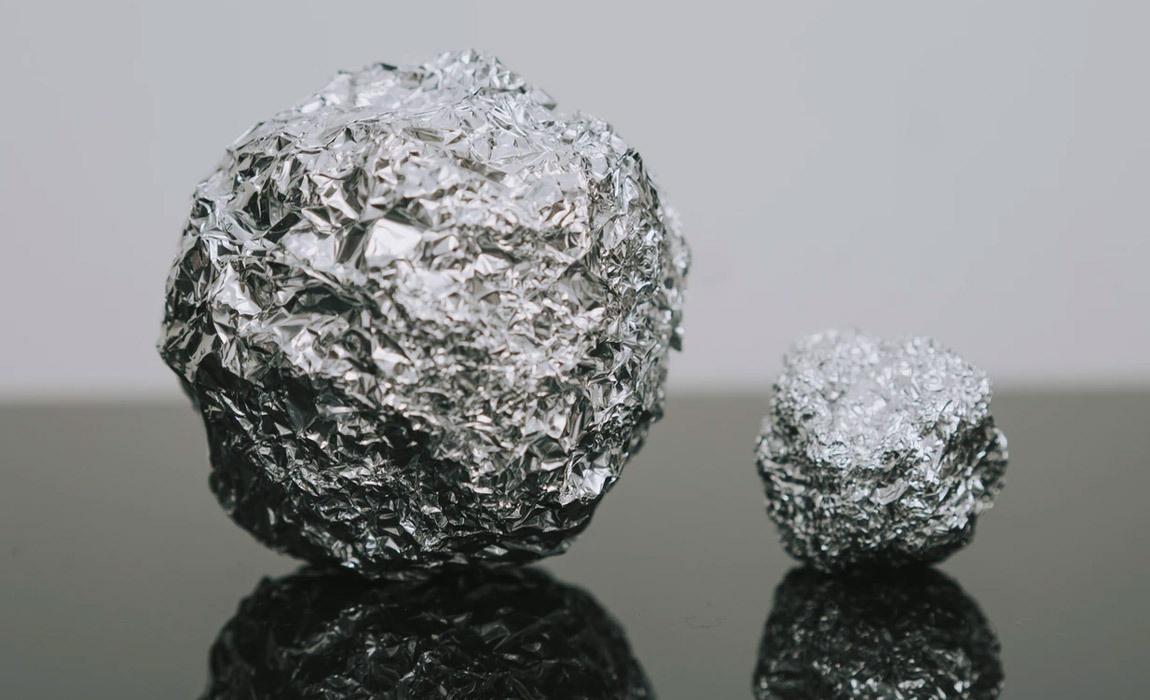Have you ever wondered why one side of the aluminum foil was shiny and one side was dull? Yeah, me too. It bothered me because despite looking at it closely, for the most part both sides seemed pretty much identical. So why is it that way? Let's take a look!
There are often questions about this difference, how the foil is produced, and how to use aluminum foil properly. Following are some of the answers that seem to make the most sense:
What Is Aluminum Foil?
Aluminum is the earth's third most abundant element. Very thin rolled aluminum sheets in their pure form are produced into folded sheets, rolls, and more with a variety of tempers and alloys that give a choice of tensile properties. The foil is extracted from bauxite, which is refined and charged with an electrical current. This process is known as electrolytic reduction.
A cold roller is just two wheels that press a thing together. It is a matter of speed and the method of powering it. With a couple of pulleys, you could have a hand-cranked roller, or you could do what they did at old grain mills and make use of a donkey or an ox. Today though we use much more powerful machines to do it faster and better.
Flattening The Material With Rollers
Aluminum foil is basically stretched with big rollers because a single sheet cannot get as thin as it needs to be and it could tear. Therefore, two sheets are rolled at the same time to allow it to be thinner without tearing. The shiny foil side is the one that was facing the rollers, and the dull side is the one that was facing the second sheet.
The Shiny Vs. The Dull Side
The foil's shininess is not related to the amount of heat/steam it traps. They are just a by-product of manufacturing and make no difference in cooking. The shiny side is only a little shinier than the dull side and the difference is so small that it will make no practical difference in cooking times.
Non-Stick Aluminum Foil
On typical aluminum foil, there is no difference between the shiny vs dull side in terms of being non-stick. However, some foil is marketed as being "non-stick aluminum foil" and in that case there is a difference since only one side is treated. In this case, it is usually that the dull side of aluminum foil is nonstick side and is the side that you want against the food.
Regular foil's dull side is NOT nonstick.
If there's any doubt though, it is typically marked on the box that your foil came in so if you are wondering which side is non-stick, make sure to check the manufacturer's markings.
To be made nonstick, a coating made of various materials and a solvent is sprayed on that dull side and is then partially cured for handling and processing. The foil is heated to fully cure the silicone coating so that it can safely handle much higher temperatures than Teflon.
How Is Aluminum Foil Used?
The variety of industries that use the foil include food, industrial, aerospace, industrial, chemicals, and more. The foil is popular with homeowners to wrap individual items, line pans and cooking sheets, cover storage containers, and more.
So Which Side Of The Foil Should Touch Food?
For this discussion, we're talking about the rolled foil used for cooking and not various packaging materials made of aluminum foil that may have been painted or contain various designs. When it comes to products like Reynolds Wrap Everyday Foil, there's really no difference in which side should be used to touch food.
However, when you start to look at other products such as Reynolds Wrap Grill Foil or Non-Stick Foil the obvious choice is to use the non-stick "dull" surface to cool food on since it is designed to release the food easier. However, there's nothing inherently dangerous about having the shiny side up or using foil either way to wrap leftovers before placing in the fridge.
Why Is It Also Called Tin Foil?
Aluminum was quite costly years ago, so they used tin and even gold, and some people incorrectly still call it tin foil. That process using other metals was around for a long time, and before industrialization, it was done by hand or by simple mechanical machines that were hand-cranked.
An interesting fact is that the Washington Monument's top is capped in aluminum because that was one of that time's most valuable metals!
Hey James Hills wants you to share this!

